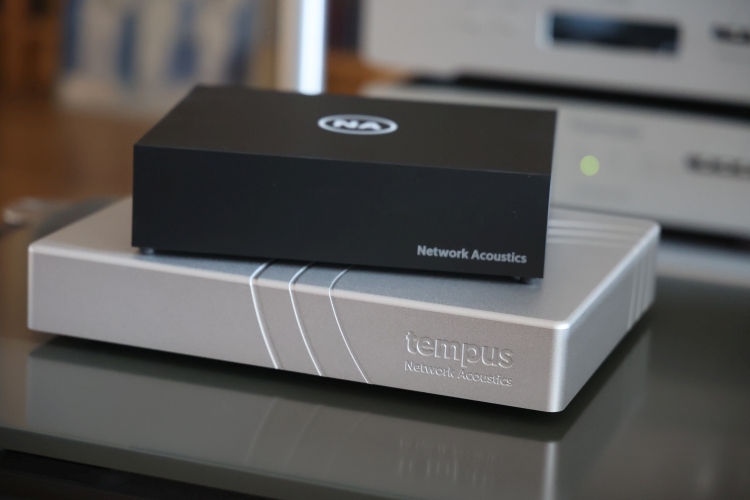
Adding muon Pro Streaming cable
So far, I’ve been using the tempus switch with standard Cat.6 cables. Honestly, the results were great and these cables did not seem to undercut the switch’s performance. Or so I thought. When I tried the Network Acoustics muon Pro Streaming Cable, boy, did that ever make a large and very positive difference!
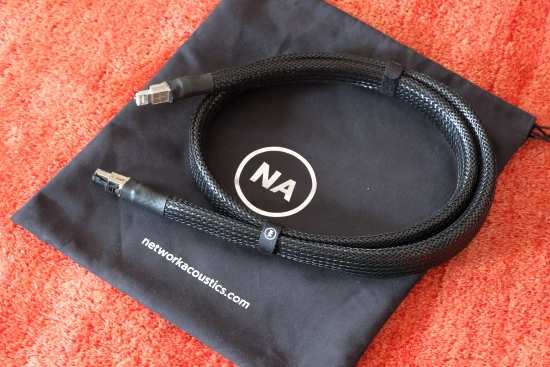
The muon Pro Streaming cable has the appearance of a very thick and heavy cable, but appearances can be deceiving! The cable is actually lightweight and the sleeve is fitted very loosely.
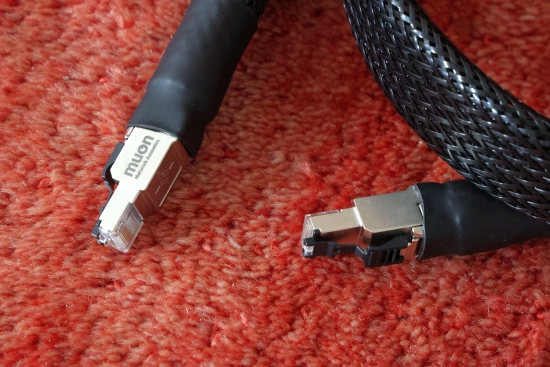
With the muon Pro Streaming cable between the tempus and the streamer, all of the tempus’ inherent qualities remain but are enhanced with even further increased transparency, refinement, and air. Oh, and spaciousness, too! The sound was already beautifully free from the speakers, but now, the stage extends further beyond the speakers and covers the entire room. Recordings with lots of ambient information benefit hugely, not only in the depth plane but also vertically, resulting in a soundstage that sometimes creates the illusion of having Dolby Atmos height channels installed. I don’t often hear products create more height, and I certainly would not expect this to happen due to using a different network switch, but there you go. This is how I heard it!
The elusive “singing” quality (as opposed to rigid, restricted, or static) that I call “lyrical” is something I heard the tempus possess right off the bat. I have a feeling that UK manufacturers are particularly careful never to lose sight of this quality. But maybe I am generalizing. In any event, all Network Acoustics products I heard so far sound liquid and alluringly lyrical. Sure enough, this quality is further enhanced with the muon Pro streaming cable. I said it before, but the recurring thought is that these products are the exact opposite of technical or over-controlled.
Both the switch and the cable have a similar sonic signature, leading to a sound that is more nimble and airy than planted and robust. But unless your system verges toward being lean in the bass or is a little reticent or polite, this balance will be preferable to the fuller and darker alternative that many switches offer.
At this point, it occurred to me that there is a nice analogy to be made with phono cartridge stylii. Here, the tempus switch and muon Pro cable would be analogous to a Micro-Ridge or Fine Line stylus shape, whereas the standard switch and cables are analogous to a conical or Elliptical stylus shape. Admittedly, this comparison is not entirely accurate, but where it concerns the overall presentation, I think it illustrates the differences quite well.
While I am providing analogies, why not add one more? While I don’t think it is possible for a digital format to ever 100% mimic vinyl playback, these Network Acoustics products do get you closer in many respects than when using a standard network switch and -cables.
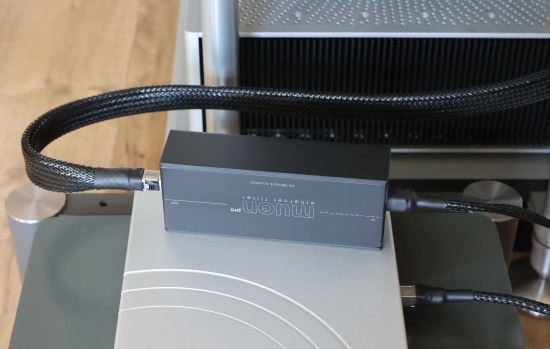
Adding muon Pro Streaming System
Now, here’s another addition that proved very interesting! Whereas the tempus and muon Pro Streaming cable fortify each other’s nimble and light-footed nature, the muon Pro System adds a new dimension, well, two, actually. First, it adds a touch of body to the bass and lower midrange without affecting the transparency and delicate nimble balance. The sound remains agile and airy but gains more saturation and substance, further increasing the level of realism. For example, low-plucked guitar strings now have a nice thud to them, piano has gained a more distinct wooden element, and so on. Everything sounds more convincing. Honestly, I felt these qualities were somewhat underexposed using the tempus without the muon System. Nevertheless, I’d still much rather take the tempus’ beautifully airy and transparent presentation over one that adds a lot of character but sounds colored as a result.
Second, and this is also a big one, the muon System further enhances the organic quality of the sound without adding any thickness or blur. Let me be very clear on this as it deserves repeated mention: the resolution, refinement, and delicacy of the cable, the tempus, and the muon Pro system are truly beyond reproach.
Power Cables
So far, I’ve been using the Tempus with a standard Belden 19364 power cable with Bals schuko and Oyaide 004 IEC connectors. This cable worked so well that I felt no real desire to change it, but upon trying, I found that the tempus can be tweaked using power cables. For instance, you can add body and substance using a GigaWatt PowerSync ULTRA cable, maximize the switch’s inherent qualities such as airiness and fluidity using a Final Touch Audio Elara, or you can make the sound crisper and more direct using the GigaWatt LC-2 EVO.
For those who like to make their own cables, Furutech is a popular choice. But I don’t feel that a cable such as the Furutech FP-TC-31 or similar combines ideally with the tempus unless you are specifically looking for the maximum in refinement and fluidity and don’t mind giving up some impact, control, and expression for this. The Oyaide Tunami V2 is an arguably more synergistic choice as it does pretty much the inverse of the Furutech, providing a rather impactful and full-bodied foundation combined with a rich midrange. Still, I feel the best balance is obtained using one of the name-brand cables I mentioned. Or, if you don’t want to enter this rabbit hole, just stick with a standard cable like the Belden and turn your attention to another area to tweak, such as the footers!
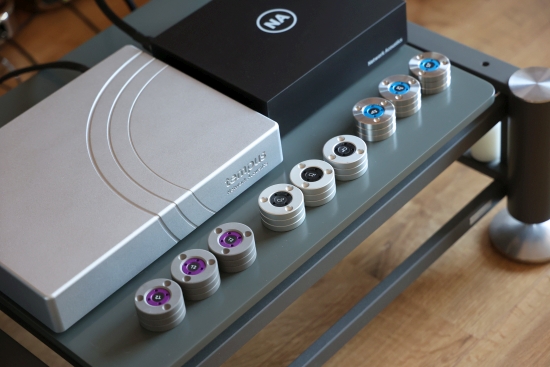
Footers
The tempus is normally placed on its own soft rubber footers. They are quite compliant, reminiscent of the soft footers under the Meridian 500 and 800 series components. Having owned various Meridian components and used various aftermarket footers with them, I know they significantly influence the sound. I know we’re still talking about a Network Switch, but then, such a device was not supposed to make a sonic difference in the first place, yet here we are. So, without prejudice, I tried a few footers under the tempus. Well, sure enough, they made a very noticeable difference!
The standard footers make the switch excel in fluidity, liquidity, and the overall sense of a free-flowing performance. Nevertheless, from earlier experience, I know they’re not the last word in providing tightness, control, or crispness. So, to see what can be done with other footers, I first tried Finite Elemente Ceraballs, the original aluminum version. While they sure added more robustness, impact, and body to the sound, I also felt they were a bit rough and bombastic, removing a good portion of the refinement and air in the process.
Substituting the Ceraballs for the entry-level Ansuz Darkz C2T (280 Euro per piece (840 for 3 / 1.120 for 4) provided a much better result, reinstating all of the switch’s inherent qualities and adding to these with more focus and tighter and more articulate bass.
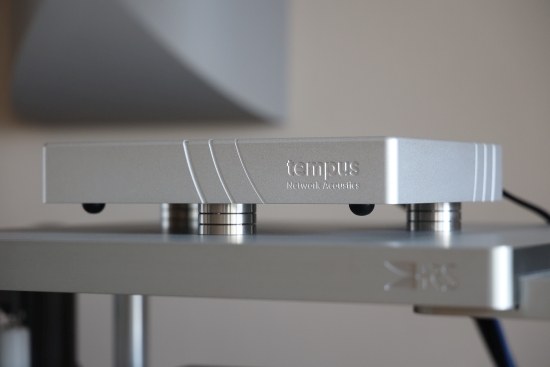
Regular readers will know that I am very fond of the T2 Darkz, and these do provide the most neutral timbre and most accurate and “chiseled” bass, along with even better transparency, but at 800 Euros per piece (2.400 for 3 / 3.200 for 4), they are arguably a little costly for this purpose. However, between the C2T and T2 are the S2T Darkz, at €640 per piece (1.920 for 3 / 2.560 for 4), still not pocket change for sure, but this model worked beautifully synergistically with the tempus. What these footers achieve (3 of them suffice) is a considerably more robust, earthier bass and deeper tonal saturation to complement the switch’s inherent qualities perfectly. While these footers most definitely enhance the sound quality, it should be noted that my experiences with the tempus so far have been gained using its integral rubber footers, and to be perfectly frank, it does sound great that way. So, whether you should consider also adding nice footers is a matter of personal preference and budget.
Naturally, when using an HRS rack, it also makes sense to use HRS footers. Of the available models, I like the Vortex system best. While these footers are relatively enormous in size, I’m definitely digging the look. Soundwise, too, there is a lot to say for these footers. Compared to the Ansuz C2T and T2, they provide an almost opposing rendition with full, rich bass and deeply saturated mids whilst retaining the fluidity.
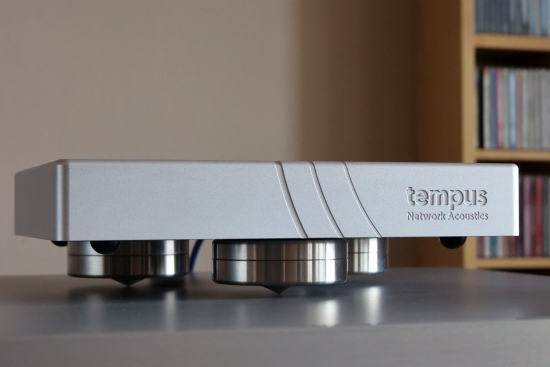
And while on the topic of HRS accessories, it would be a shame not to add the final touch in the shape of a Damping Plate. Contrary to expectations, the damper does not “dampen” the sound but further increases transparency and resolution.
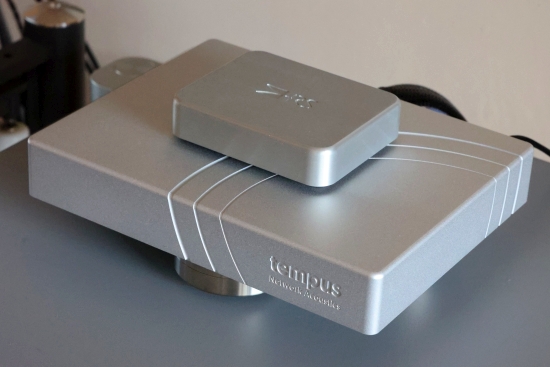
In all fairness, instead of such accessories, you could also get the muon Pro Streaming system and network cable. But please note that these two product categories do not achieve the same thing. So, depending on what you want to achieve (which sonic aspects to enhance), one or the other may be a more sensible choice. Unfortunately, in audio, I’m afraid everything matters.
Servers and system matching
The tempus works its magic with the Grimm MU1 just as much as with the Antipodes Oladra. Naturally, these two servers have their own unique sonic fingerprints, just like any other audio gear. While the tempus is very neutral and transparent and brings many advantages that many listeners will prefer over the sobriety of a regular switch, it does present the music differently. Thus, the end result may just be the ticket, or it may pull the performance in another direction than ideal for that system, just as it can be the case with any audio component added to a hi-fi system. When you get to this level of optimizing, whether it’s a switch, a DAC, or a cable, the goal is to find those components that best match together, and with network switches, it is no different. That said, the tempus is the most transparent switch I heard so far, and because of that, it is likely to work well in a wide range of systems.
Prologue
Ultimately, many of the aspects I described are matters of taste. Most importantly, the tempus’ most overwhelming quality for me is that it grabbed my attention from the first notes I played with it. Not because it makes me flinch but by allowing the music to flow so utterly freely and transparently in the room that you forget you’re listening to a system. With this, it allows the listener to undergo the music and the story within it in all of its beauty.
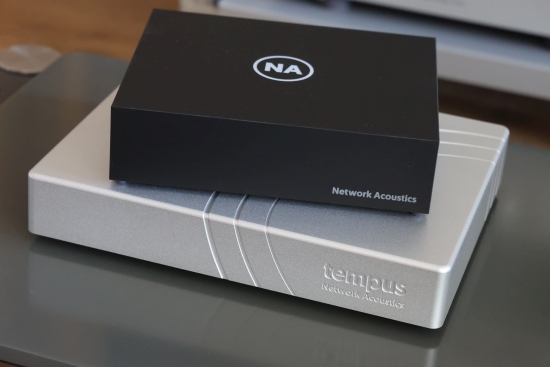
Conclusion
The tempus switch provides an open, airy, and agile sound. It is super-delicate, contemplative, effortlessly lyrical, and immediately emotionally involving. Adding the muon Pro Streaming cable between the tempus and the streamer retains all of the tempus’ inherent qualities but enhances the performance with even further increased transparency, refinement, air, and spaciousness.
Whereas the tempus and muon Pro Streaming cable fortify each other’s nimble and light-footed nature, the muon Pro System adds a touch of body to the bass and lower midrange and further enhances the organic quality of the sound, importantly, without any thickness or blur.
What struck me most about these Network Acoustics products is that the resolution, refinement, and delicacy of the cable, the tempus, and the muon Pro system are truly beyond reproach. Yet, they present all this in an utterly natural and organic manner. It’s a feat quite hard to achieve.
External Links
Manufacturer: Network Acoustics
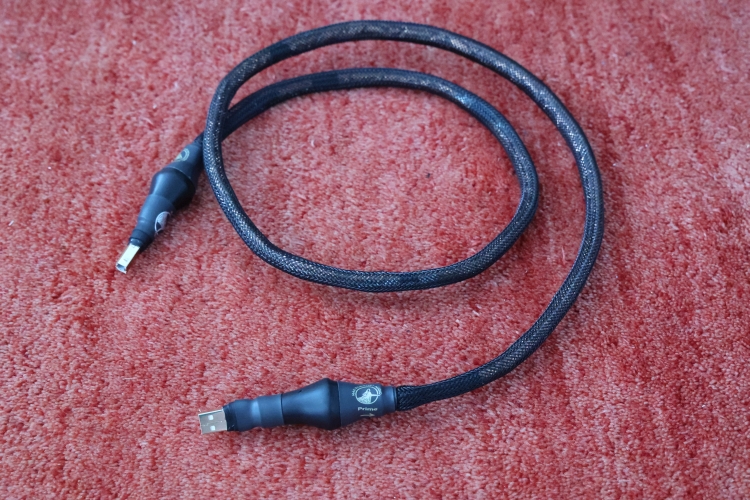
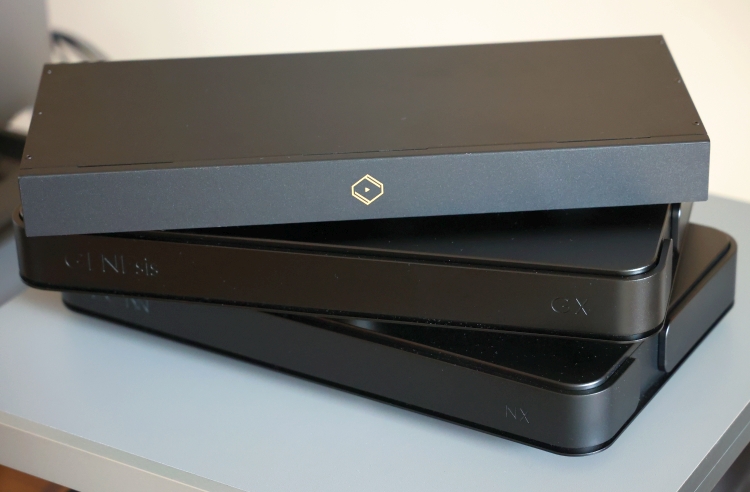


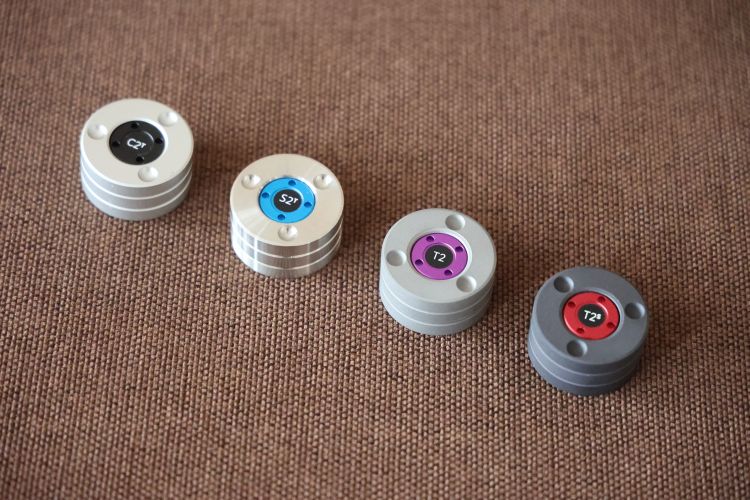
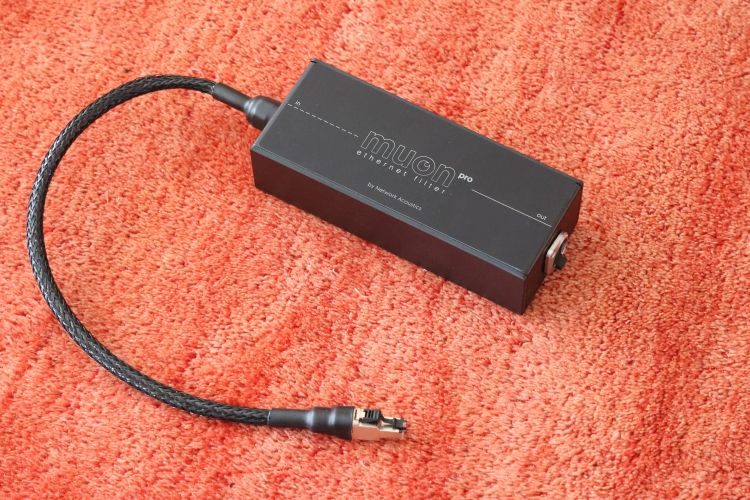
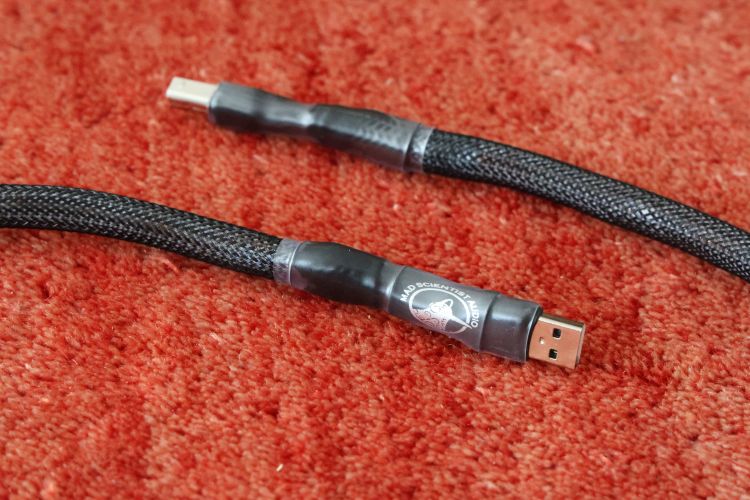
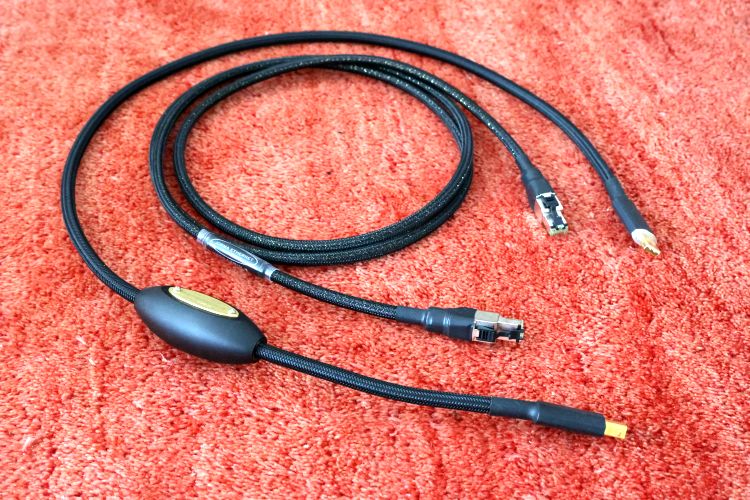
Thanks for the helpful review as always Christiaan. The qualities of the Tempus that you mentioned are all areas I’m hoping to improve on/alter in my system, so I’m considering ordering a Tempus and Muon Pro with two Network Acoustics cables. I am able to proceed with without hearing first due to a flexible return policy a dealer has offered me.
My system is very transparent but is a bit rich and bass heavy/organic/dark so I’m hoping the Network Acoustics gear might help lighten things up and add a bit of air and free things up on the timing front. The Tempus will be replacing an Innuos PhoenixNET. Any thoughts on how the two compare? Not sure if you’ve heard the PhoenixNET; I realize you haven’t explored Innuos products on your site to date.
Hi Nigel, it sounds like the tempus may indeed provide what you are looking for. Alas, I’ve never heard any Innuos components and couldn’t tell you how the PhoenixNET would compare.
Thanks again Christiaan. Some of those Ansuz footers you mentioned are really, really pricey. I’ve found some footers I’ve tried tend to emphasize midrange body and midbass in particular (along with providing soundstage and other benefits), which actually works against my goal of making my system less rich and to make my system a bit less grounded, more light footed and “sober” to use your word. Of the footers you’ve mentioned are there models that would help in that regard, as opposed to becoming richer with more bass which at present I’m wanting to avoid? I noticed that you mentioned the entry level Ansuz footers emphasized the mid and top end, but to me it sounds like the higher models may take me in the wrong direction regarding bass and tonal richness? Going to give Townshend Pods a shot given their generous return policy – not sure if you’ve had a chance to try these….
Hi Nigel, in short, C2T or, if budget allows it, T2, are the ones you will probably prefer. For an in-depth description of the Ansuz Darkz, please see my dedicated Darkz review. Or search the site for Darkz as I used them in a bunch of other reviews. Happy to answer any residual questions there. I’ve not heard any Townshend products yet.
Interesting review, thank you. I currently have a Melco S100 and considering a change. Any thoughts on how this switch compares to a Synergistic Research?
Hi Richard, Alas, I have no experience yet with the Synergistic Research Switch.
Thank you for your excellent review. I have a MU2, and was wondering if you found the NA Tempus and Muon Pro provide the improvement you write about? I see you use a MU1. These are supposed to have a very good upsampling and timing, which some say precludes the use of these network devices to a great extent. BTW: Read you article on Scintillas. I am one of the founders of Apogee and the designer of the Full Range and the Scintillas. Using Scintilla SN 001 for all this time.
Hi Gary, how nice to meet you! What amazing and game-changing work you did together with Leo Spiegel and Jason Bloom. Apogee remains close to my heart, as you might tell from the dedicated Apogee Acoustics Company Special section on HFA;-)
Both the MU1 and MU2 have very good upsampling and good timing indeed. However, I would not say timing is a main property for deciding if adding the tempus is desirable or not. I find that network switches always have an effect, no matter the server or streamer that is used. However, there is always the matter of system synergy and personal preference. The tempus enhances the fluidity, flow, and naturalness of the sound, and I found this works with all servers, Grimm included. If what I wrote in the tempus and Muon reviews appeals to you, then I would not hesitate to try it.
Hallo, ich habe ebenfalls einen Tempus + deren Ethernetkabel + 2x Muon Pro Filter. 1x Muon Pro vor dem Tempus, 1x nach dem Tempus. Meine klangliche Vorliebe im Zusammenspiel mit einem Antipodes K50 Server ist der 100 MB/s Ausgang vom Tempus. 100 MB/s klingt ruhiger, analoger, aufgelöster, nicht so stressig im Vergleich zum 1 GB/s Ausgang/Anschluss. Habe auch mit Network Acoustics darüber gesprochen, da sie den 1 GB/s bevorzugen. Aber für meine Ohren klingen 100 MB/s besser. Egal ob beim Streamen via Tidal, Qobuz oder von lokaler interner SSD.
Viele Grüße
Christian